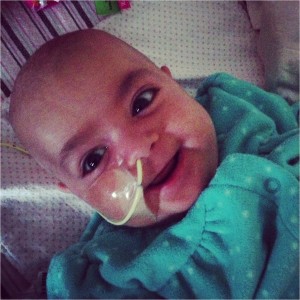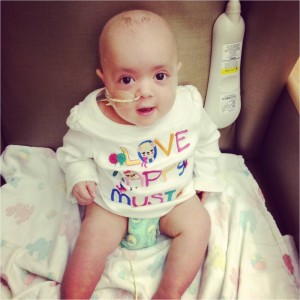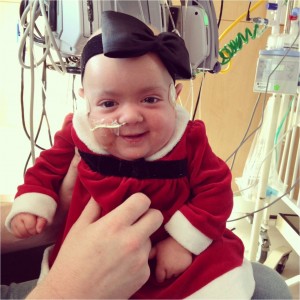In 2014, the Seattle Children’s Research Institute will implement life-saving projects, begin new studies to keep children safe and continue searching for ways to prevent and cure diseases that threaten some of our youngest patients. We are celebrating the New Year by highlighting some of the work that has researchers excited about 2014.
Looking forward to saving lives

On Jan. 1, years of work by Children’s research and clinical staff came to fruition when a test for severe combined immunodeficiency (SCID) was added to Washington’s newborn screening panel for all babies born in our state. Known as the “bubble boy” disease, SCID is a group of inherited disorders that cause severe abnormalities of the immune system. Babies with this disease often show no symptoms at birth, but after a few months they are unable to fight infections. Common illnesses, such as the flu or an ear infection, can be life-threatening for a child with SCID.
“Babies with SCID benefit from their mom’s immune system at birth, but once that goes away they have very little ability to defend themselves,” said Troy Torgerson, MD, director of Children’s Immunology Diagnostic Lab.
If caught early, more than 90 percent of SCID cases can be cured with a bone marrow transplant or gene therapy. But once a baby contracts an infection, survival rates drop to 50 to 60 percent.
“Treating infections in these kids is very difficult,” Torgerson said. “Antibiotics usually slow bacteria down so the immune system can catch up, but they are much less effective if you have no immune system.”
The federal government added SCID screening to national newborn screening standards in 2010, but implementing the recommendation in Washington state took years, in part because SCID screening requires technology not used in other newborn screenings.
The Research Institute’s Center for Immunity and Immunotherapies worked closely with the Department of Health’s Newborn Screening Lab over the past four years to help implement SCID screening in Washington. Lab staff spent time at the research institute learning how to perform the SCID screening and worked closely with research staff to develop protocols so babies with SCID are quickly referred for evaluation and treatment at Children’s.
The cost of not screening

Evelyn Tomlin of West Linn, Ore., was born with SCID on April 16, 2013. She had low platelets at birth but was not screened for SCID. Consequently, Evelyn was not diagnosed with the disease until three months later, after she was treated for pneumonia at Randall Children’s Hospital in Portland.Once she was diagnosed, Evelyn was sent to Seattle Children’s, where the immunology department determined what type of SCID she had and how best to treat her.
“The fact that it’s a research hospital means there are always a lot of experts thinking about her,” said Stephanie Tomlin, Evelyn’s mom. “We felt like we were in the best hands.”
Evelyn’s case was challenging because she was diagnosed after getting multiple infections. After she was put on a respirator for two weeks, Evelyn’s first bone marrow transplant failed.
“That was the worst time of my life,” Stephanie said. “We thought she might not survive.”
But Evelyn’s second transplant in November was a success. Today, she is a happy, smiling baby and should make a full recovery.
“It’s a miracle that she survived,” Stephanie said. “But if she would have been screened as a newborn she would have had a transplant before getting an infection and we would have avoided many bumps in the road.”
Saving more lives

National screenings indicate about 1 in 40,000 babies have SCID. The Washington Department of Health predicts one to two newborns with SCID will be identified in our state each year. Additionally, the test is expected to also identify six to nine children in Washington annually with other immune deficiencies.
Children’s researchers will continue working this year to improve bone marrow transplant outcomes and gene therapy methods so even more babies survive immune disorders like SCID.
“It’s exciting that we can take what was a lethal disease and cure it so these kids can grow up and have kids of their own,” Torgerson said.
Resources:
- Washington’s newborn screenings
- Washington Department of Health
- Children’s Immunology Diagnostic Lab
- Seattle Children’s Research Institute’s Center for Immunity and Immunotherapies
If you’d like to arrange an interview with Dr. Troy Torgerson or Evelyn’s family please contact Children’s PR team at 206-987-4500 or [email protected]

